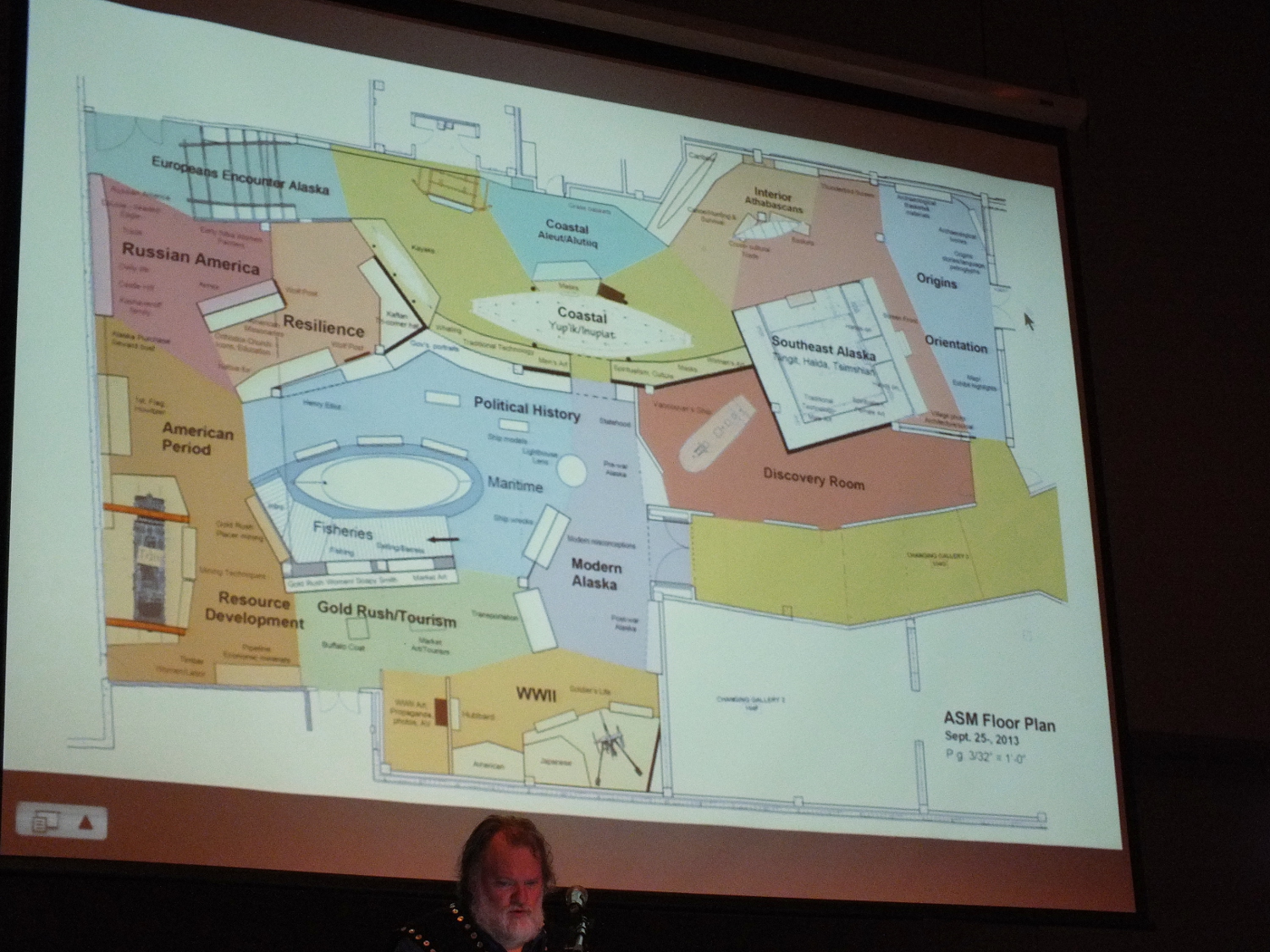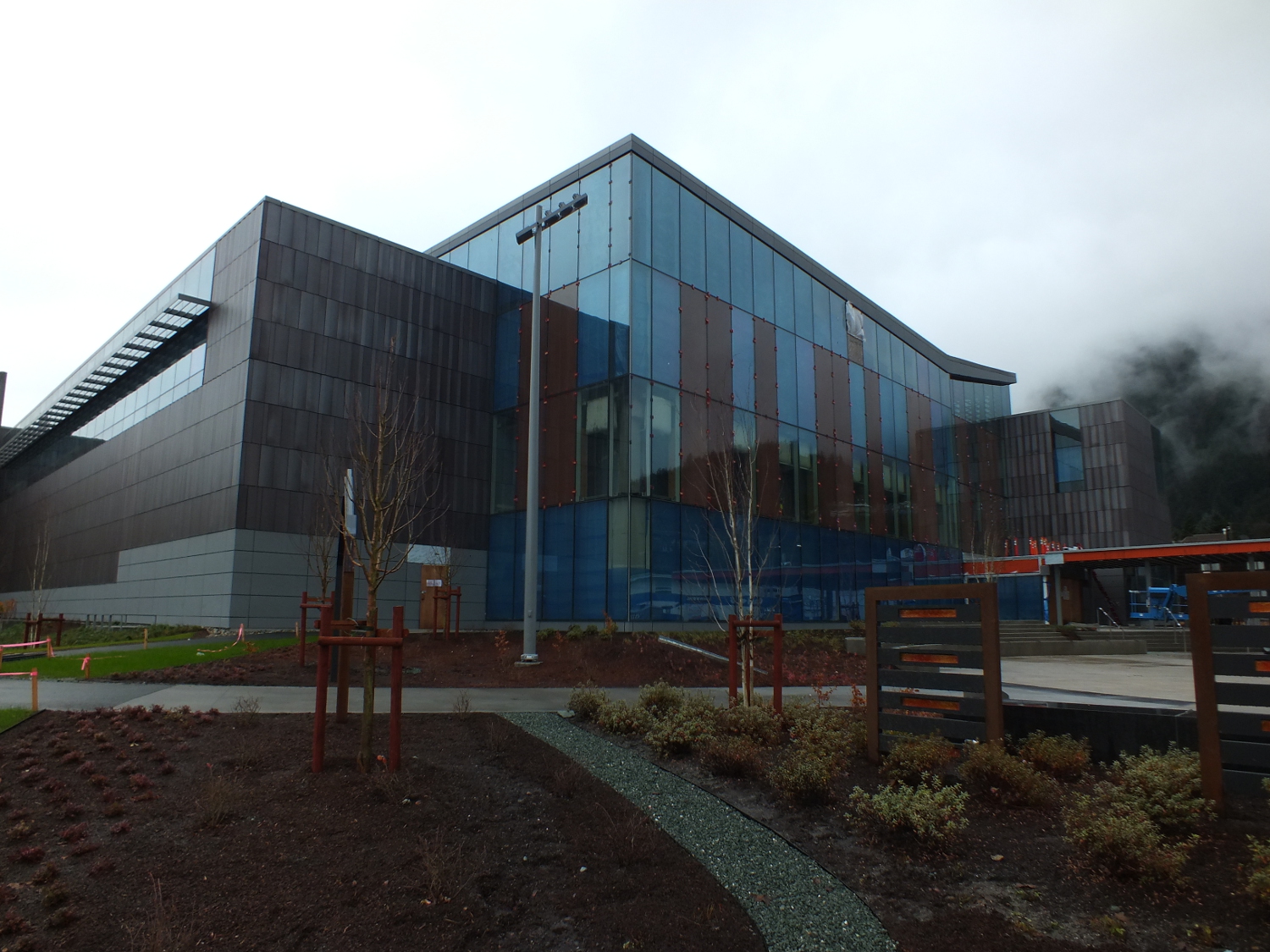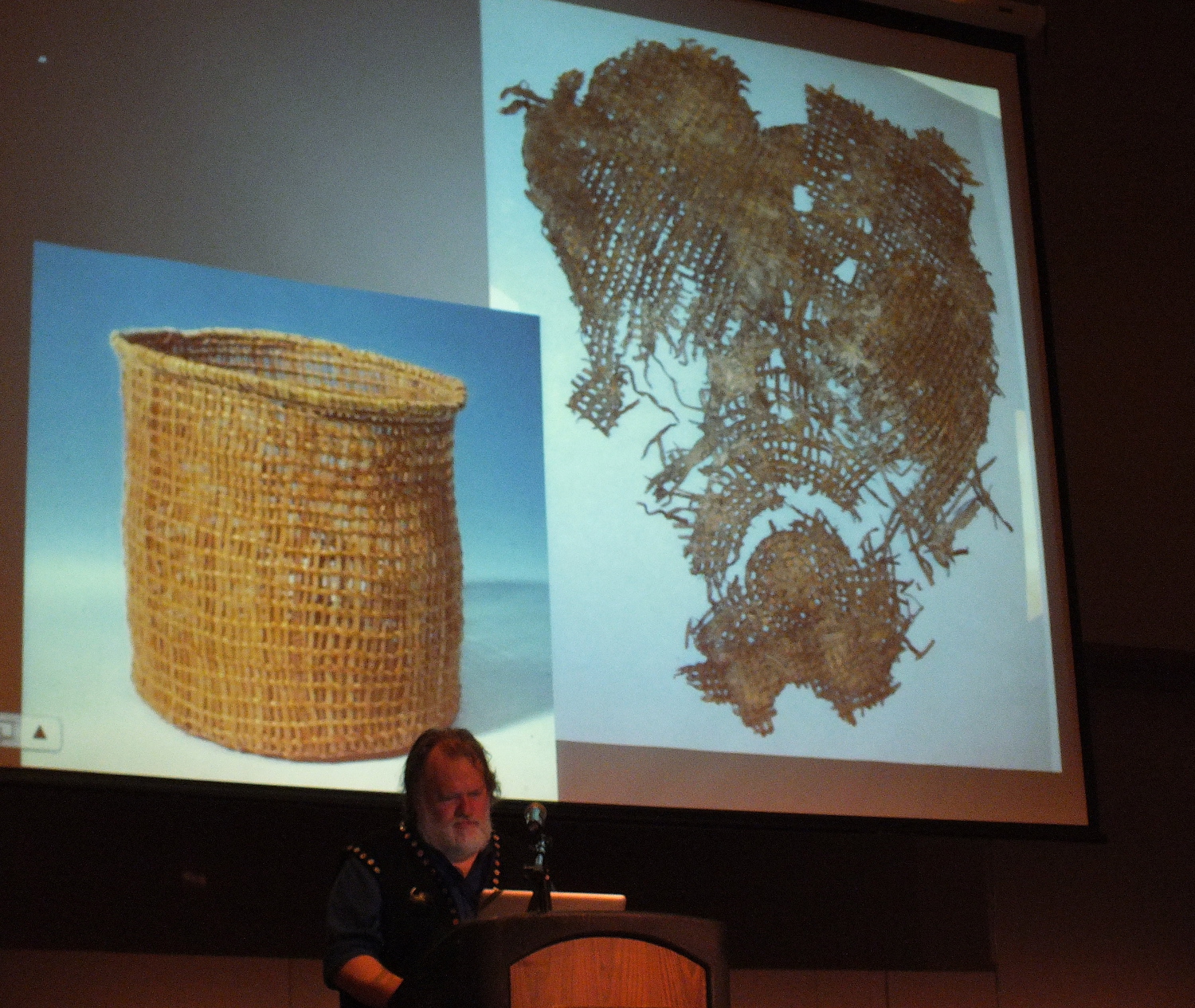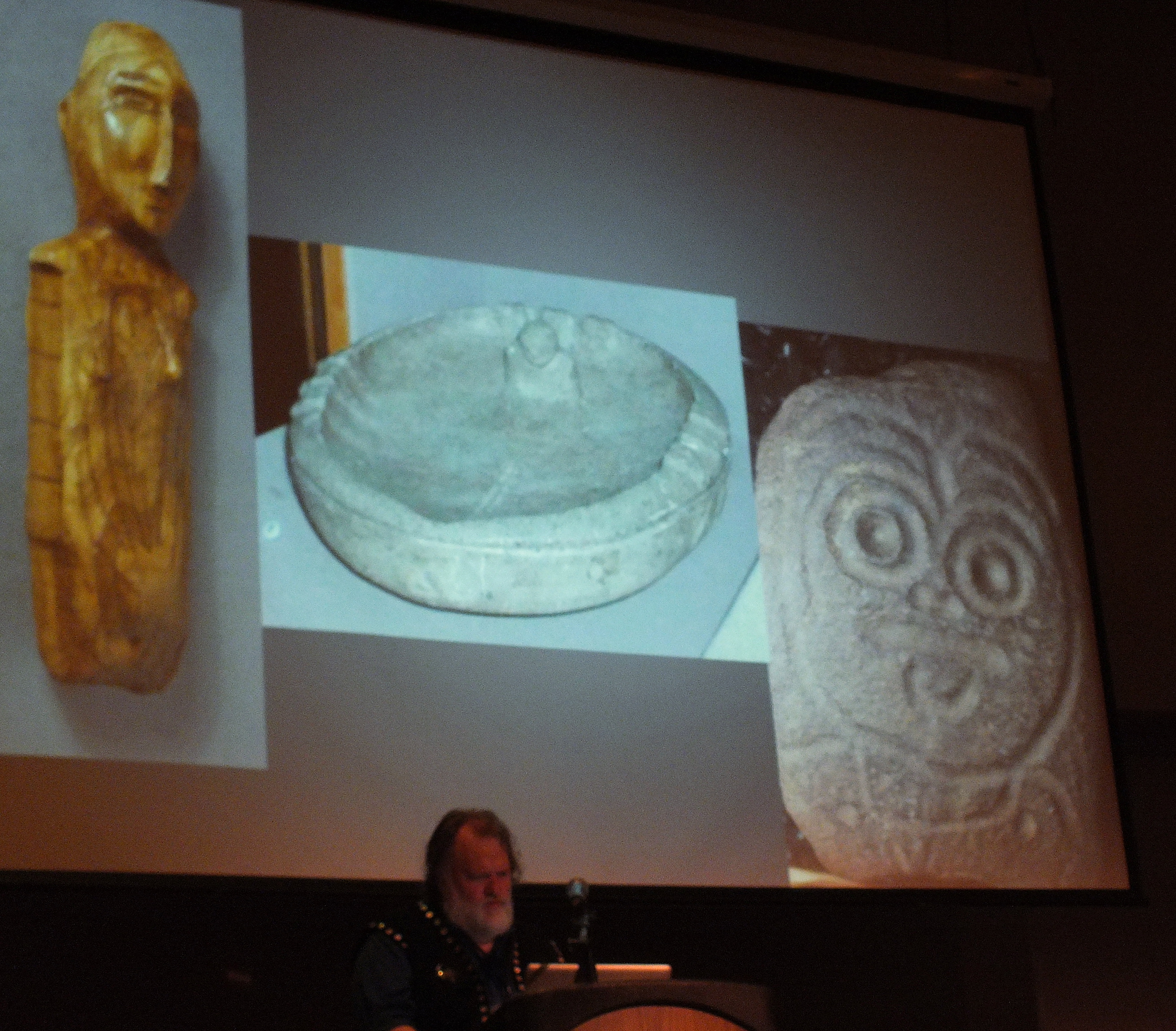
State museum officials say they have an opportunity to do something they’ve never done before.
“It’s a pretty tall order to wrap your head around the task that we’ve been put to, which is to build a whole new exhibit from scratch basically,” said Steve Henrikson, curator of collections at the old Alaska State Museum.
He said some of their old exhibit displays used to be cobbled together on a shoestring and with salvaged materials.
That’s not the case for the Father Andrew P. Kashevaroff State Library, Archives and Museum that’s under construction in downtown Juneau. Henrikson continues as curator of collections at the new facility.

“In this project, we actually had millions of dollars to totally redo the exhibits,” Henrikson said.
Henrikson said they’ve been helped by community curation, or consulting community members from various Alaska Native tribes about selecting items for their permanent exhibits and how they should be shown.
Henrikson provided an update on exhibit planning during a presentation at the “Sharing Our Knowledge” clan conference held recently in Juneau.
He said they’ll show Native artifacts from all regions of Alaska, but their displays will likely have a Tlingit emphasis since the museum is located in the heart of Tlingit territory.
“The theories of how migration happened or if it happened, and in what direction are changing so much that we’ll try to reflect some of that uncertainty in the exhibits,” Henrikson said. “We’re trying to get away from having definitive answers about history that’s contested.”
Henrikson said original house posts and a house screen that were on loan and displayed in the old museum’s Tlingit clan house have been returned to Klukwan and Seattle. A new Tlingit clan house is now being built inside the new museum.
“When houses like this have been put into museum exhibits before, there’s been a tendency to try to skirt the thorny issue of whose house to put up by creating something that never really existed before,” Henrikson said. He used the example of an Eagle-Raven house, or a house that had everybody’s crests on the house posts.
As a result, Henrikson said visitors are usually confused.
Instead, he said they’re working with Áak’w Kwáan members to accurately depict the house as belonging to a representative clan of one moiety as the host. Hats from the other moiety will be on display inside the clan house.
“And so, the balance is achieved,” Henrikson said. “It’s a realistic scenario then of the hats inside representing guests coming to a ku.éex’. And then the host clan is the one that has its crests on the screen and the house posts.”
The clan house will include objects ranging from several hundred year old artifacts to contemporary Native art, like a painted panel by Jim Schoppert.

“It’s going to be continually reinforced that Alaska Natives, Tlingits and other tribes are still here and still doing many of their traditional activities,” Henrikson said.
“So, there won’t be this implicit understanding that all of those people were just in the past and have been assimilated.”
Elsewhere in the museum, Henrikson said cross cultural exhibits will show similarities and compare differences between all Alaska Native groups and tribes on trade, art, basketry, bentwood objects and water craft.
A 6,000-year-old fragile basket fragment may be exhibited if museum officials can protect it from vibration, even visitors’ footsteps can be destructive. Other key early objects on display will include an ivory figurine from St. Lawrence Island, a stone oil lamp from Kodiak Island, and a petroglyph from Southeast Alaska.
Henrikson said they’ll likely use plain body forms for clothing displays, and avoid the controversial practice of using lifelike mannequins to represent Native people.
Artifacts from the Haida, Tsimshian, Athabascan, Yup’ik, Iñupiaq, Alutiiq and Aleut peoples will also be exhibited, as well as items from European contact, the Russian era and the American period. All of the displays will flow together in a partial loop around the first floor exhibit area.
“We really feel strongly that in this area, particularly, where we talk about the Alaska Native response to colonialism, that we have to talk about the negative things,” Henrikson said.
“Once we have an understanding about that, we can talk about how the resilience of the people allowed them to survive through it.”

Museum officials plan to display Tlingit armor, the white man crest from the top of a Tongass village totem, a replica of a possession plate buried by Russians to mark their territory, a portable American cannon, an unexploded shell and a beaver bowl recovered from the 1882 bombardment of Angoon and part of a whale harpoon used to kill a shaman.
“There’s been a lot of talk lately about the concept of ‘Why can’t Alaska Natives just get over it?’ This is the evidence, the physical evidence showing why they can’t just get over it,” Henrikson said. “It’s the same as if we were presenting a legal case.”
Henrikson said they’re consulting with clans about the display of such sensitive items.
He said exterior work and landscaping is largely complete at the $139 million museum facility, and interior work is now underway.
As many as 90 new exhibit cabinets and cases will be arriving in January. Artifacts will be installed and labeled over the winter.
The grand opening of the Father Andrew P. Kashevaroff State Library, Archives and Museum is planned for May.
